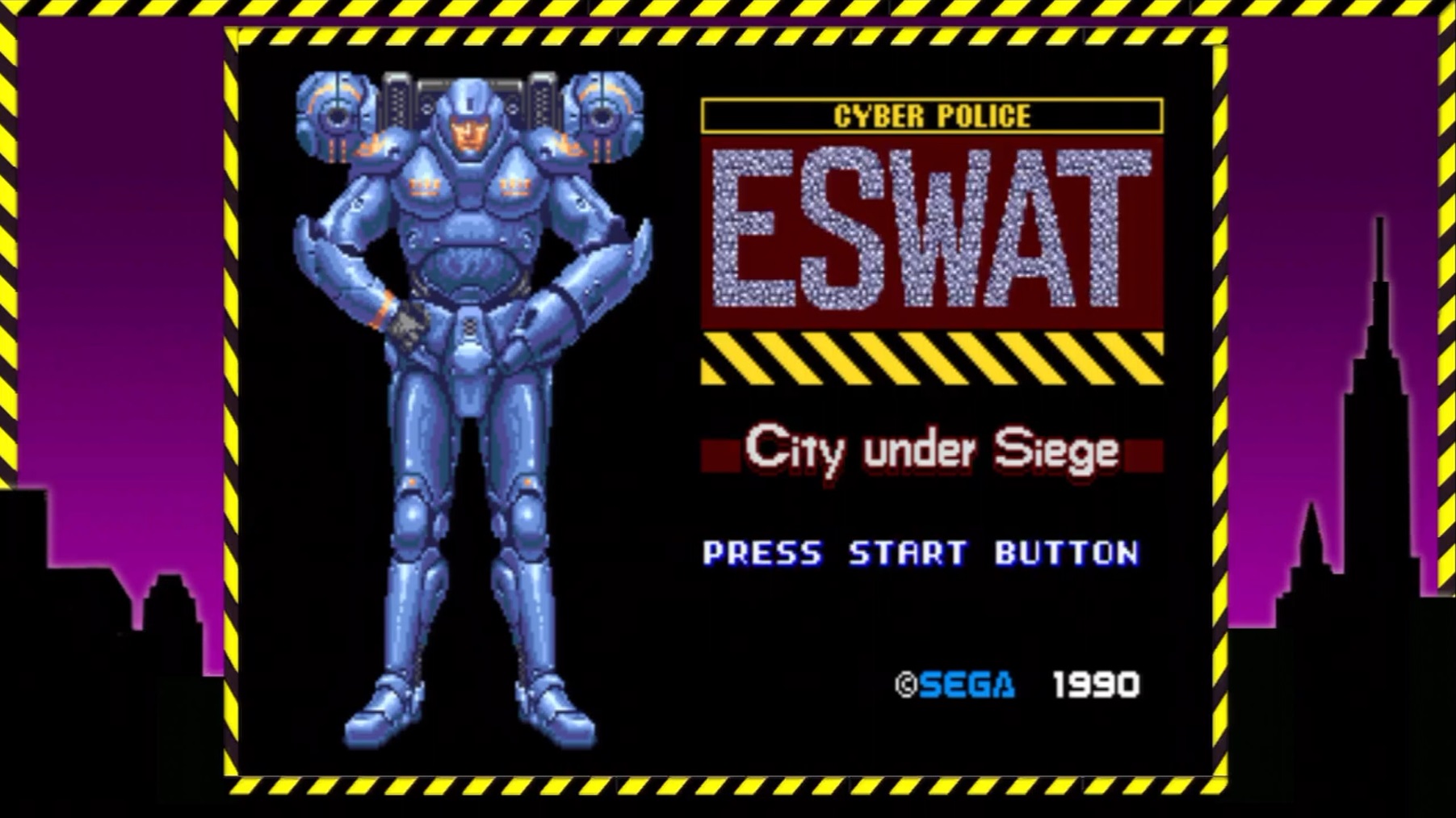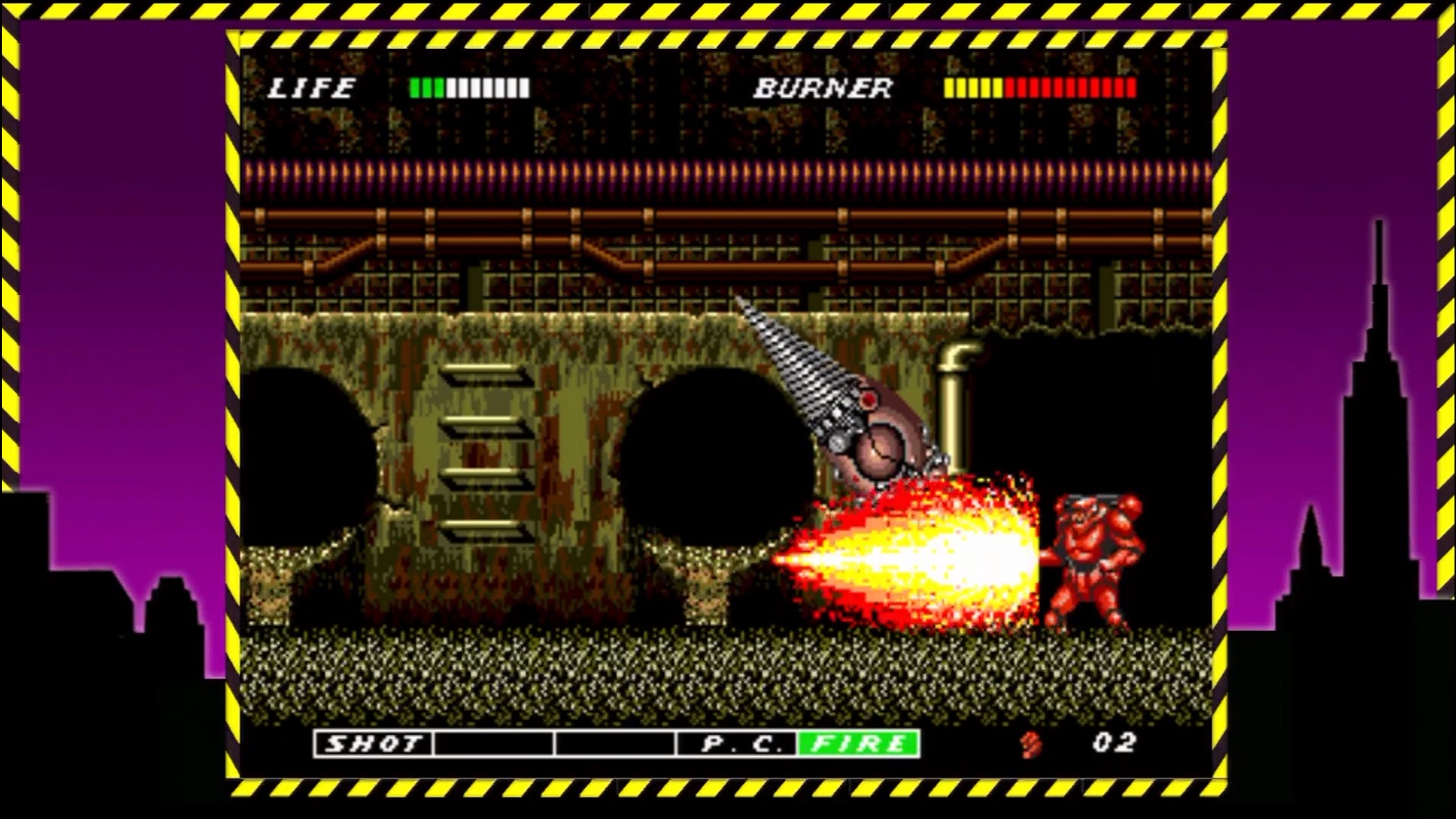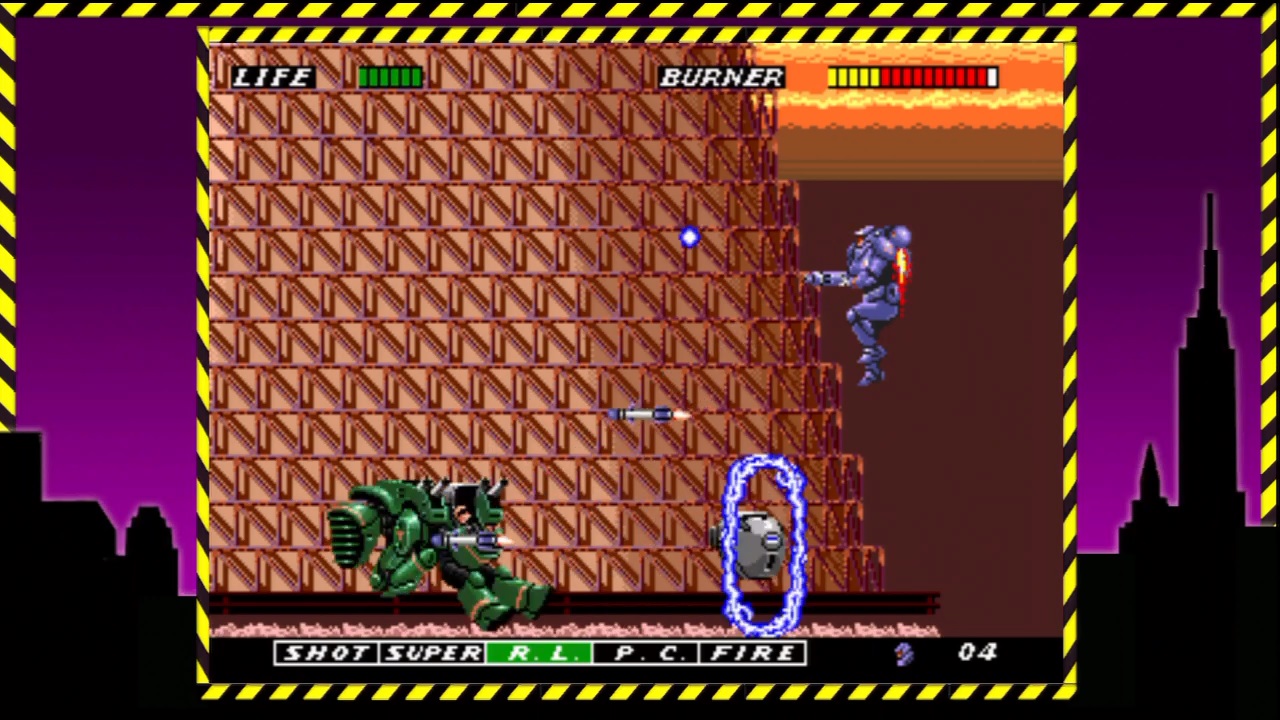
I have a soft spot for everyday characters who play roles in extraordinary stories. Despite not being a super powered hero, chosen one or whatever excuse there is to overcome excruciating odds, they still contribute. Yet, not every person off the street who happens to do something important fills this role. To appreciate a character’s place, a broad enough perspective of the game’s world is required. There also needs to be a level of modesty in their actions and the influence they have.
ESWAT: City Under Siege for the Sega Genesis is quickly disqualified by featuring a character with a super-powered suit, but the game does give the player taste of his life before he gears up as an American Mega Man box art model.
You play as police captain Duke Oda who is just doing his duty… of murdering every single criminal he comes across on the street. “I’ll check your body for drugs after you’re dead.”

There are really only two types of stages throughout the game: vertically layered action levels as well as stages with light exploration elements. The lack of the power suit makes the first two levels quite different. Instead, they act as a ramp up to ESWAT’s more unique mechanics.
The opening plays like a standard side-scrolling action game, where Duke has to stop a prison break using only his pistol. Surprisingly, the officer is quite flexible. He’s able to perform a high jump, fire upward and move at the same time as ducking, a.k.a. The Duck Walk. Duke Walk? While not instantly killed by foes, his uniform doesn’t offer much protection. It’s all about using every pixel of distance to conserve what little health he has. It’s pretty straightforward stuff for the genre.
The second stage attempts to introduce the exploration aspect, but does a poor job of communicating it. It leaves you to forever wander through a handful of prison cells until you realize, or look up online, that the horizontally moving platform outside can also travel vertically. Even an enemy, who is on an identical lift, simply travels left to right, so it doesn’t even try to show it’s an option available. From there, it’s a matter of finding the correct cell to enter and slogging through enemies until you reach the end of the level… Or so you think.

Right before the Boss’ door, there’s a sudden pit that drops back to the beginning of the stage. It’s solely designed to waste time or arguably foretell that the game will pull this same trick later. Either way, it’s kind of shitty.
As charming as I find the concept of playing as a simple police officer, even by Stage 2 it’s clear the game needs more to stand on its own. After handling the prison break, Duke is promoted to the ESWAT department – a special division that uses exoskeletons to combat an evil organization.
While the core controls remain, Duke Walk and all, there’s a feeling clumsiness that comes with his new found suit. He’s bulkier and easier to hit. Enemy fire that previously could be ducked under must now be jumped over or shot out of the air. On the other hand, he gains access to a variety of weapons as well as a jet pack with limited, but recharging, fuel.

Defeating foes will arm the player with a rapid-fire machine gun, missile launcher, chargeable plasma cannon and a one-time-use screen-clearing flamethrower. Switching between firearms has no pause; requiring quick reflexes to swap and adapt to each situation. Rather than acting as a permanent arsenal, each death will unequip one weapon until re-obtained from another enemy. It’s a bit frustrating as some portions of the game feel built with angled attacks or rapid-fire in mind, even though the standard weapon is a slow straight shot.
The jet pack is, in some ways, the main star of ESWAT. However, it’s not very effective for standard movement. Fuel depletes quickly and, without the help of external recharging pads or power-ups, recovers at a crawling rate. Most puzzle or platform intensive sections will include these to keep the action moving. If the player gets stuck somewhere without a way to instantly recharge fuel, the game comes to a halt. Often, I’d just go get a drink and hope that my pack would be full by the time I returned.
I understand the desire to prevent abusing the mobility, but the quick drain and slow recharge of the pack is excessive enough to discourage experimentation. There’s not enough freedom to consistently enjoy one of the major factors that makes ESWAT different. When there is the opportunity to jet around, it’s incredibly fun, fast and responsive. Instead of carrying the character’s momentum, the direction switches instantaneously.

Although jetting around is not great for most combat scenarios, it can occasionally be used to launch out of messy situations. Hovering doesn’t require nearly as much fuel as moving, so frequently defeating a boss comes down to finding the best place to hover and avoid damage.
In combination with the downward arc on the missile launcher, it’s a deadly tactic. In some ways, it feels like it’s undermining parts of the game. Yet, rarely is there an entirely safe location. If anything, finding that optimal spot to rain hell gives a sense of accomplishment.
Other than the limited use of flying, I wouldn’t say anything is too particularly special about ESWAT’s gameplay. What makes it stand out is seeing that progression from a police officer to super soldier portrayed as a playable section. (Spoilers) It’s also nice to see it all come full circle in the final encounter, when Duke sheds the ESWAT suit to deal the final blow in his old blue uniform. (End Spoilers)
Duke Oda may not perfectly fit the everyday character role, but some progression and mechanical twists make his game worth a playthrough.










